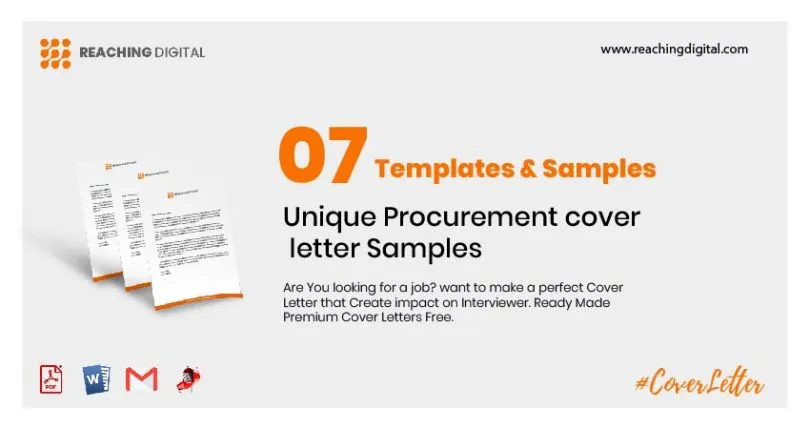Understanding the Procurement Specialist Role
Before diving into the specifics of writing a procurement specialist cover letter, it’s crucial to grasp the core responsibilities of this role. Procurement specialists are the backbone of any organization’s supply chain management, focusing on sourcing goods and services at the best possible prices while maintaining quality and meeting organizational needs. They negotiate contracts, build supplier relationships, and ensure timely delivery of essential resources. Understanding this role allows you to tailor your cover letter to highlight the most relevant skills and experiences that align with a hiring manager’s expectations. A well-written cover letter showcases how you can contribute to efficient cost management, risk mitigation, and overall operational success within the company. Highlighting your experience in these areas can set you apart from other candidates, demonstrating a clear understanding of the role and your ability to excel in it.
Key Components of a Procurement Specialist Cover Letter
A compelling cover letter serves as your initial introduction to a potential employer, and it is an opportunity to make a strong first impression. It’s a comprehensive document that goes beyond merely listing your qualifications; it allows you to articulate your career narrative, showcase your personality, and demonstrate a genuine interest in the role and the organization. Start with a professional header that includes your contact information, the date, and the hiring manager’s details. Follow this with a personalized salutation, directly addressing the hiring manager by name if possible. Your opening paragraph should immediately grab their attention, clearly stating the position you are applying for and expressing your enthusiasm. The body of your cover letter should emphasize your relevant skills and experience, highlighting quantifiable achievements, industry knowledge, and any certifications. It should also demonstrate your understanding of the company and its values. Conclude with a strong call to action, requesting an interview and expressing your eagerness to discuss how you can contribute to the team. Close the letter with a formal closing and signature, then meticulously proofread and format the document for professionalism.
Contact Information and Date
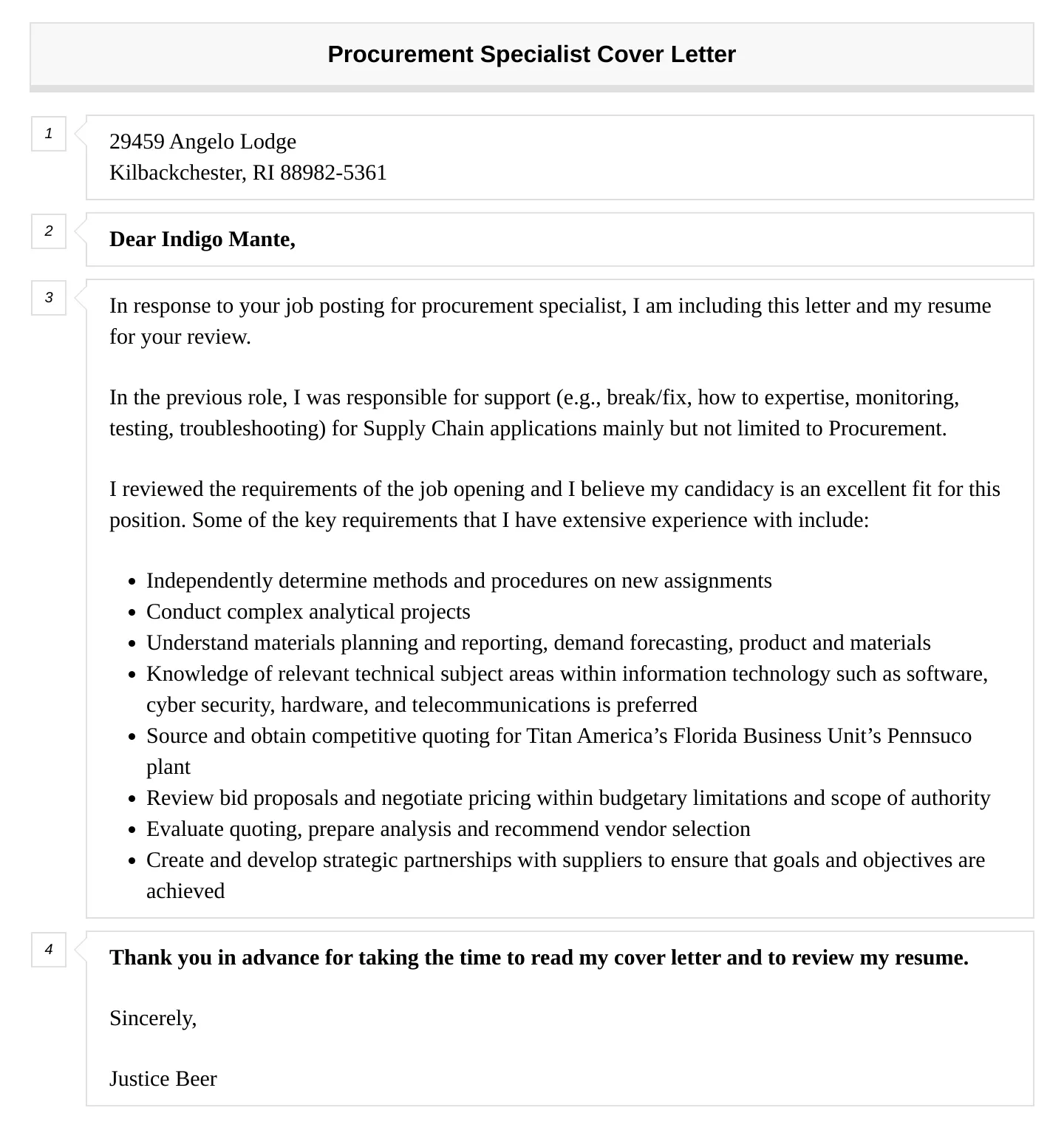
Start your cover letter with your contact information, including your full name, address, phone number, and professional email address. Following this, add the date. Ensure that your contact details are easily accessible and up-to-date, as this is how recruiters will reach out to you. The date is essential for the formal structure of the letter. Proper formatting and presentation here can make your letter appear more organized and easy to read, helping to create a positive impression. Also, consider including a link to your professional online profile, such as LinkedIn, which can further enhance your credibility. This initial section sets the stage for the rest of your application, so accuracy and professionalism are paramount. A well-formatted contact section conveys your attention to detail and seriousness about the role.
Hiring Manager’s Details
Next, include the hiring manager’s details, which shows you’ve taken the time to research the company and the specific role. Begin with the hiring manager’s name, title, and the department they oversee. If you can’t find the hiring manager’s name, research on LinkedIn or the company website. Addressing your letter to a specific person demonstrates your genuine interest and attention to detail, which can significantly increase your chances of making a good first impression. If you are unable to find a specific name, use a general title such as ‘Hiring Manager’ or ‘Recruiting Team.’ However, personalization is always preferable. Including the hiring manager’s information also makes the letter feel more personal and helps you stand out from candidates who send generic applications. If you are unsure about specific details, it is better to do some quick research to make the letter as personalized as possible.
Personalized Salutation
Start your cover letter with a personalized salutation. This shows you have taken the time to understand the hiring manager’s name and demonstrate that you have gone beyond the generic. Use ‘Dear Mr./Ms./Mx. [Last Name]’ if you know the name of the hiring manager. If the name isn’t available, use a professional greeting like ‘Dear Hiring Manager’ or ‘Dear Recruiting Team.’ A personalized greeting can create an instant connection and signal that you care about the application. Avoid generic greetings like ‘To Whom It May Concern,’ as these often suggest a lack of effort. The initial greeting sets the tone for the entire letter, so it’s crucial to start on a positive note that reflects your respect and genuine interest in the role. Make sure you’re using the right title (Mr., Ms., etc.) and that the spelling of the name is correct. This sets a professional tone.
Opening Paragraph Grab Their Attention
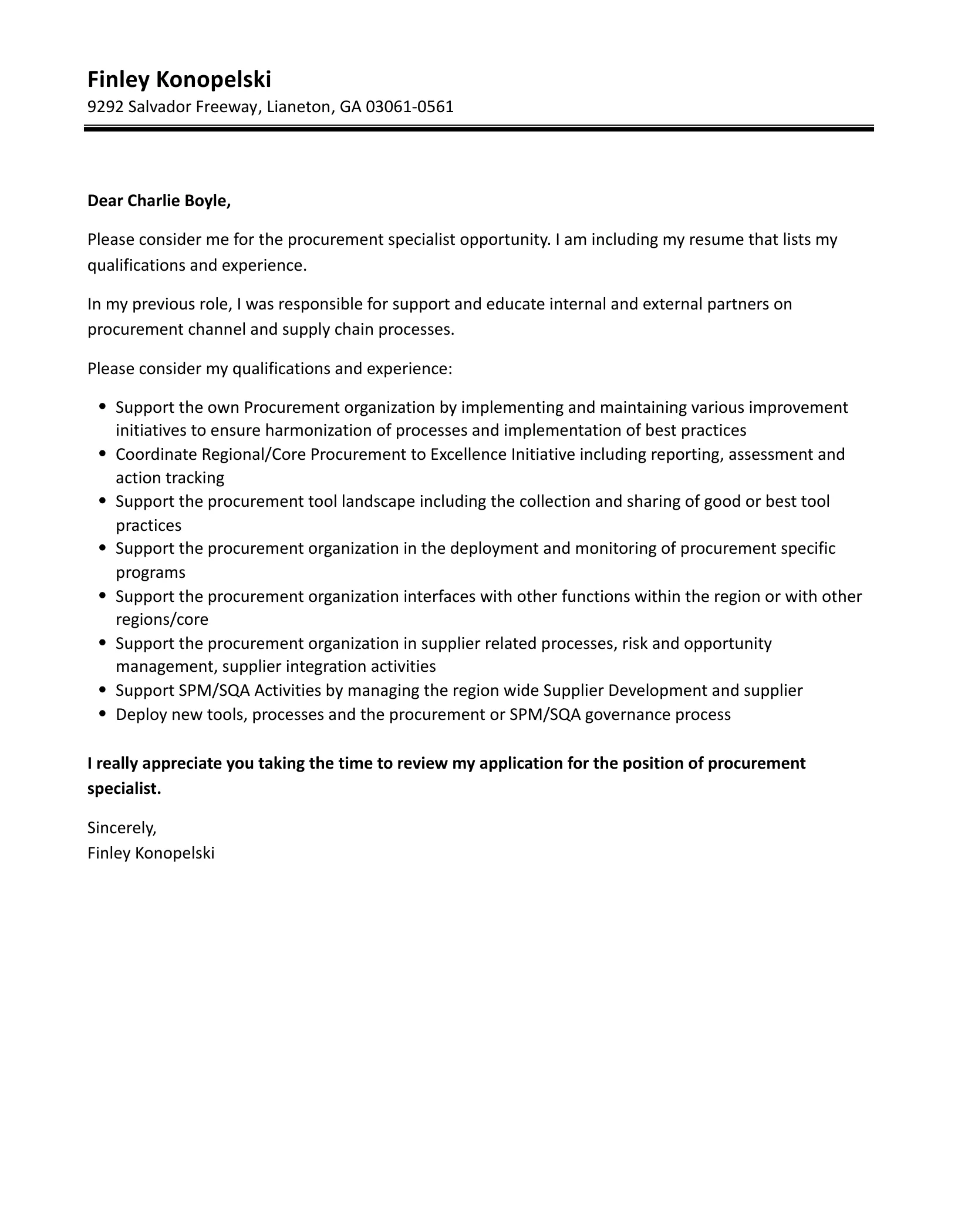
Your opening paragraph is your first chance to captivate the hiring manager’s attention. Clearly state the position you’re applying for and express your enthusiasm. Briefly mention how you discovered the opportunity – whether through a job board, a company website, or a referral. To make this paragraph more compelling, include a brief, specific statement about why you are a good fit for the role. This may be a sentence highlighting your key skills or a relevant achievement that aligns with the job requirements. Demonstrating your immediate understanding of the company’s needs and your potential contribution from the outset can set a positive tone for the rest of your cover letter. Your goal here is to spark their interest and make them want to read more. Avoid generic statements and focus on showing genuine interest in the company and the procurement specialist role.
Highlighting Relevant Skills and Experience
This section is the core of your cover letter, where you showcase your relevant skills and experiences. Focus on skills and achievements that align with the job description’s requirements. Provide specific examples from your previous roles. This could include experience in contract negotiation, supplier relationship management, cost reduction strategies, or any other procurement-related tasks. Use action verbs to describe your accomplishments. For example, instead of saying ‘responsible for negotiating contracts,’ say ’negotiated over 50 contracts, resulting in a 15% reduction in vendor costs.’ Use keywords from the job description to help the hiring manager quickly see how you fit the role. Demonstrate your understanding of the procurement processes and your ability to contribute to the company’s objectives.
Quantifiable Achievements in Procurement
Quantifiable achievements are vital to showcasing the value you bring to a procurement role. Always try to quantify your accomplishments with numbers and data. Instead of saying ‘Improved procurement processes,’ you might say ‘Improved procurement processes, resulting in a 10% increase in efficiency and a 5% reduction in lead times.’ This provides concrete evidence of your impact. Highlight specific projects where you achieved cost savings, improved supplier performance, or streamlined operations. Include numbers that support your claims. Provide context for your achievements. Explain the scope of the project, the challenges you faced, and the results you achieved. This helps the hiring manager understand the significance of your contributions and how they can benefit the company. Always focus on outcomes and the value you delivered to previous employers, using figures to support your claims.
Showcasing Industry Knowledge and Certifications
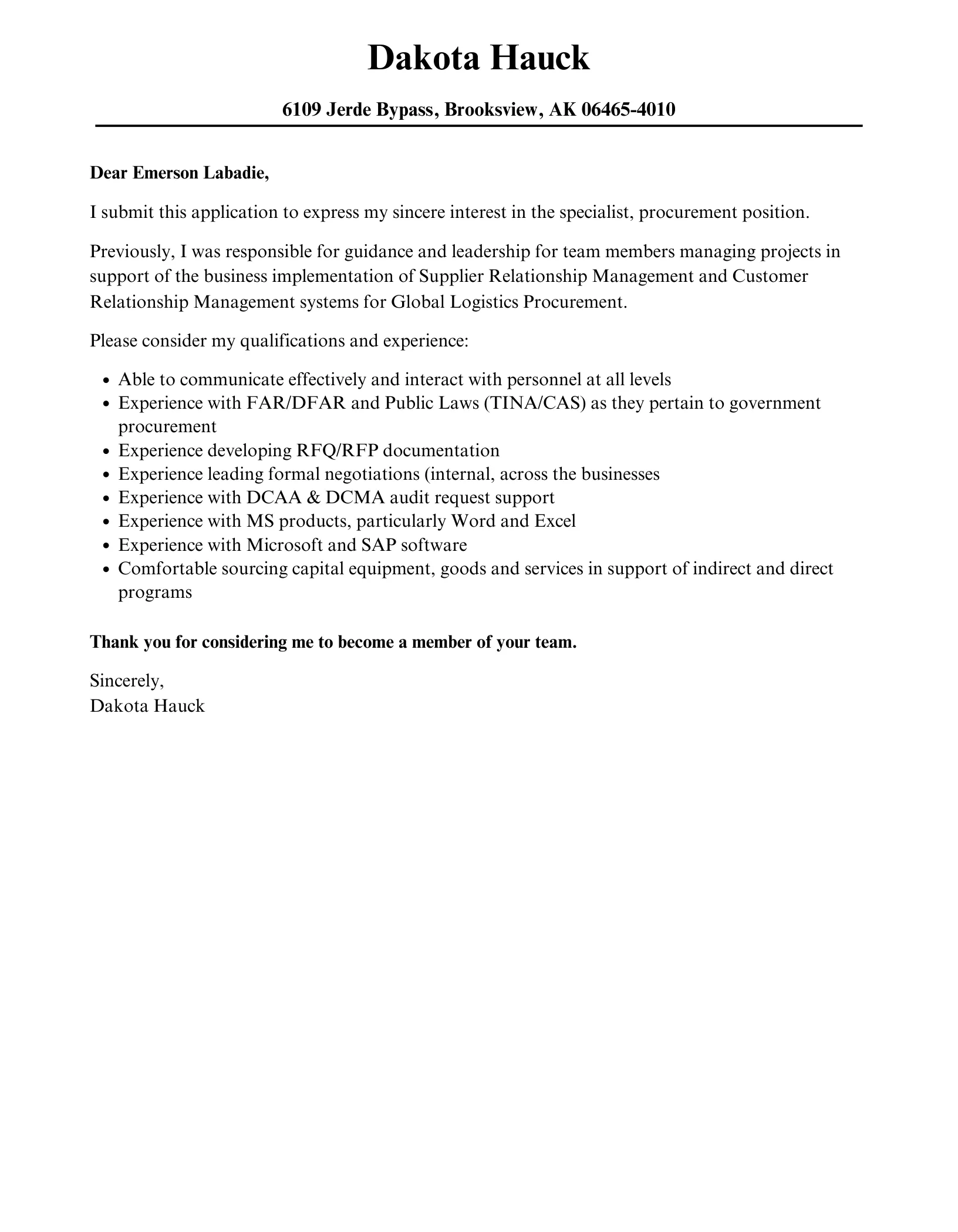
Procurement specialists must have a strong understanding of industry trends, best practices, and relevant regulations. Mention your knowledge of the specific industry or industries relevant to the role. This can include market analysis, risk management, and supply chain optimization. List any relevant certifications, such as Certified Professional in Supply Management (CPSM), Certified Purchasing Manager (CPM), or other credentials that demonstrate your expertise. Include the name of the certification, the issuing organization, and the date you obtained it. Certifications can validate your skills and show a commitment to professional development. Mention your familiarity with procurement software, such as SAP Ariba, Coupa, or other relevant tools. Your focus should always be on how your skills and knowledge align with the job requirements and will contribute to the success of the organization.
Expressing Enthusiasm and Company Alignment
Express your enthusiasm for the role and the company. Demonstrate that you’ve researched the company and understand its mission, values, and culture. Mention specific aspects of the company that resonate with you, such as its commitment to sustainability, innovation, or community involvement. Explain why you are particularly interested in working for the company and how your values align with its goals. This shows you are more than just a skilled candidate; you are a good cultural fit. Tailor your cover letter to each job application. Reference specific projects or initiatives that align with the company’s current goals or challenges. Your goal here is to show you’ve given thought to how you can contribute and that you’re genuinely excited about the opportunity.
Call to Action Requesting an Interview
Conclude your cover letter with a strong call to action. State that you are eager to discuss how your skills and experience can benefit the company and the procurement team. Make it clear that you are available for an interview and provide your contact information again, as a reminder. Thank the hiring manager for their time and consideration. Express your appreciation for the opportunity to apply. Use a professional tone and show your confidence in your abilities. A direct call to action helps move your application forward. Indicate your eagerness to hear back from the hiring manager and discuss how you can contribute to the company’s success. A strong call to action can be as simple as ‘I am available for an interview at your earliest convenience and look forward to the opportunity to discuss my qualifications further.’
Formal Closing and Signature
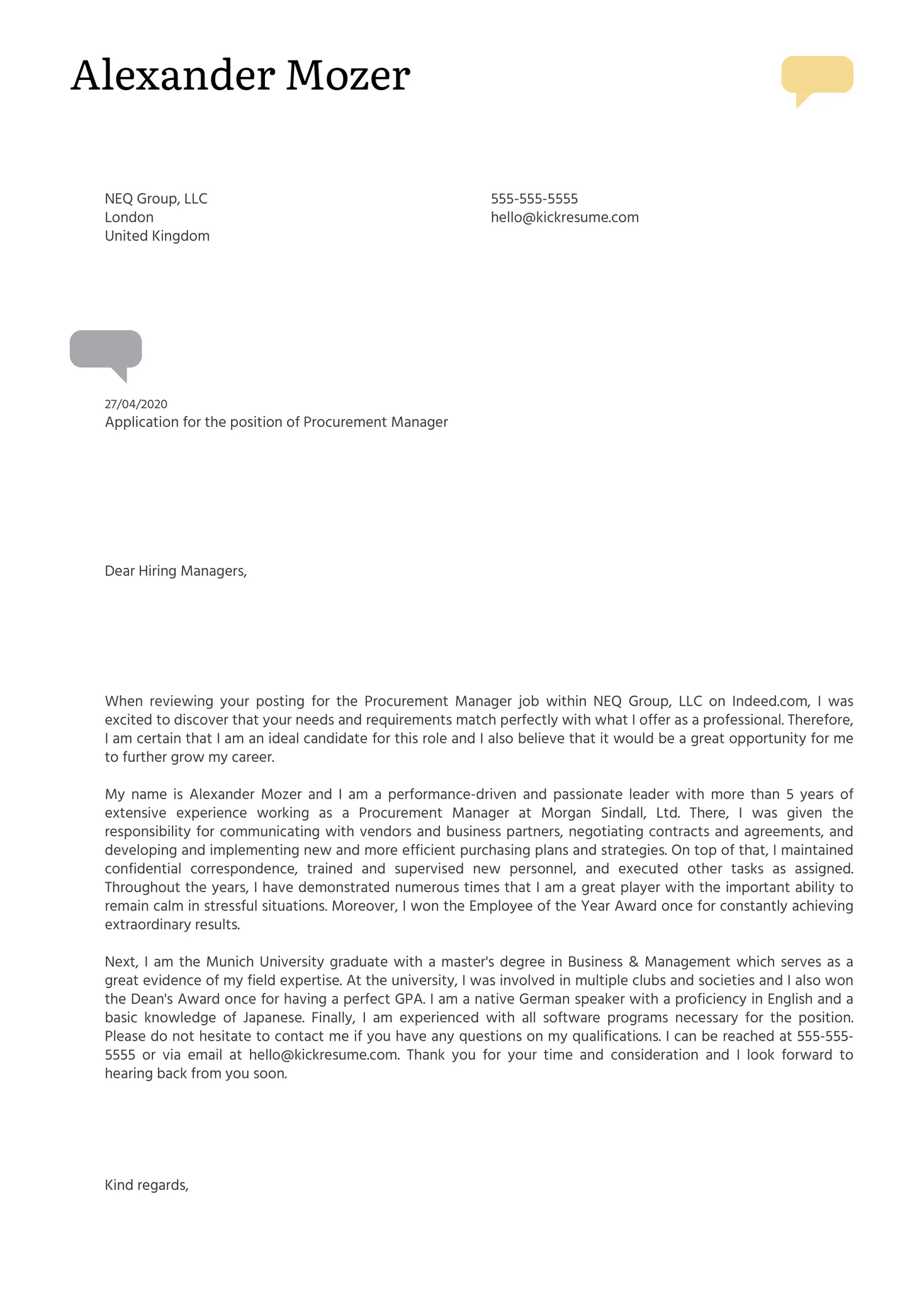
Close your cover letter with a formal closing, such as ‘Sincerely,’ ‘Best regards,’ or ‘Yours sincerely.’ Follow the closing with your full name and, if you are submitting a physical copy, your signature above your typed name. If submitting electronically, you can omit the physical signature. Ensure your closing is professional and appropriate for the context. The formal closing sets a professional tone and signals the end of the letter. Always double-check that your signature is legible and that all the elements are correctly formatted. Your closing should be a reflection of the tone you have set throughout your cover letter, so make sure it is respectful and professional, leaving a positive final impression. It is a key component in making sure your application presents a professional image.
Proofreading and Formatting for Professionalism
Before submitting your cover letter, meticulous proofreading and formatting are essential. Review your letter for grammar, spelling, punctuation, and stylistic errors. Errors can undermine your credibility and professionalism. Use a spell checker and grammar checker, but also read the letter carefully yourself to catch any errors these tools might miss. Ensure the formatting is consistent throughout, with clear fonts, proper spacing, and alignment. Keep the format clean and easy to read. Use a professional font like Times New Roman, Arial, or Calibri, and maintain a font size of 11 or 12 points. The layout of the cover letter should be visually appealing, with sufficient white space to prevent it from appearing cluttered. Make sure your letter is well-organized, with clear sections and headings. A well-formatted letter reflects your attention to detail and can increase your chances of getting an interview.
Tailoring the Letter to Each Job Application
Customize your cover letter for each job application. Do not use a generic cover letter. While you can create a template, you must modify it to match the specific requirements and the company’s culture. Research the company and the specific role you are applying for. Highlight the skills and experiences most relevant to the job description. This shows that you understand the company’s needs and have taken the time to tailor your application. Include keywords from the job description in your letter to increase your chances of getting noticed by applicant tracking systems (ATS). Mention any specific projects or achievements that align with the company’s goals. Tailoring your letter demonstrates genuine interest in the position and can significantly enhance your application. Always review the job posting carefully and adjust your cover letter accordingly, creating a personalized document that directly addresses the requirements and preferences of the hiring manager and the company.
